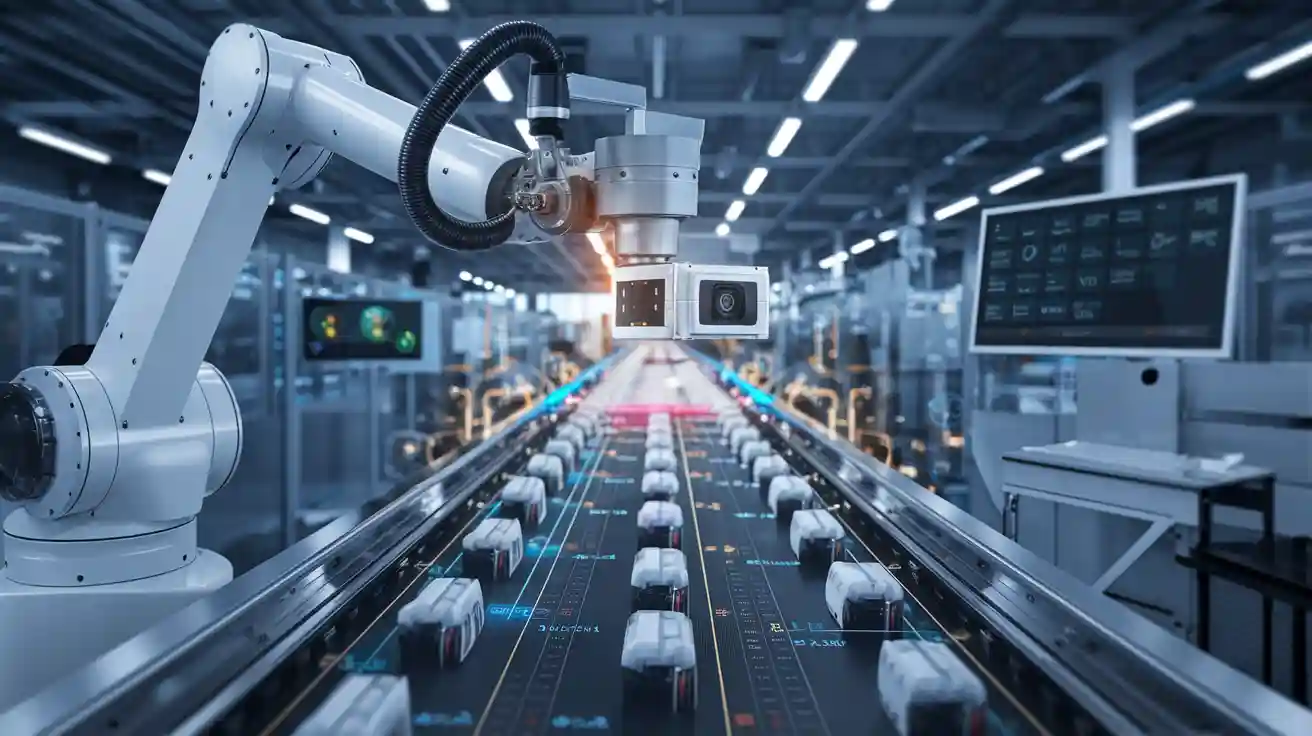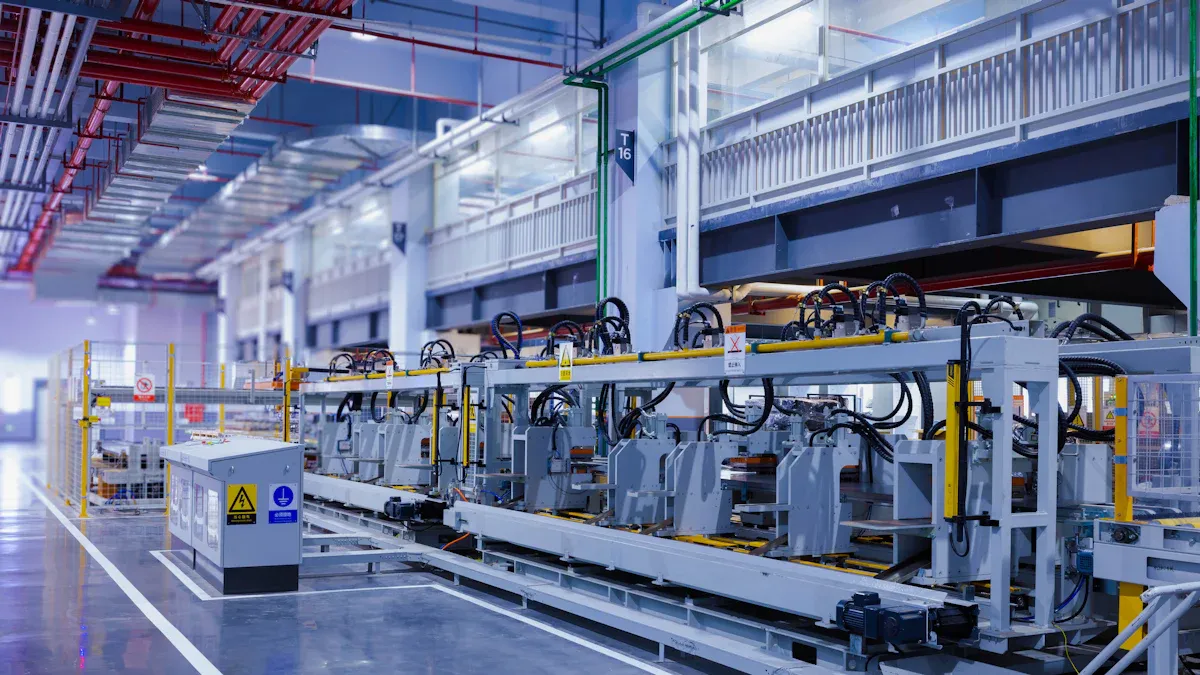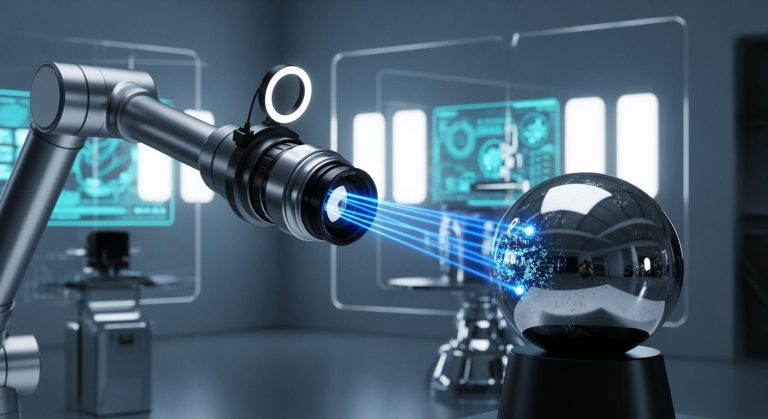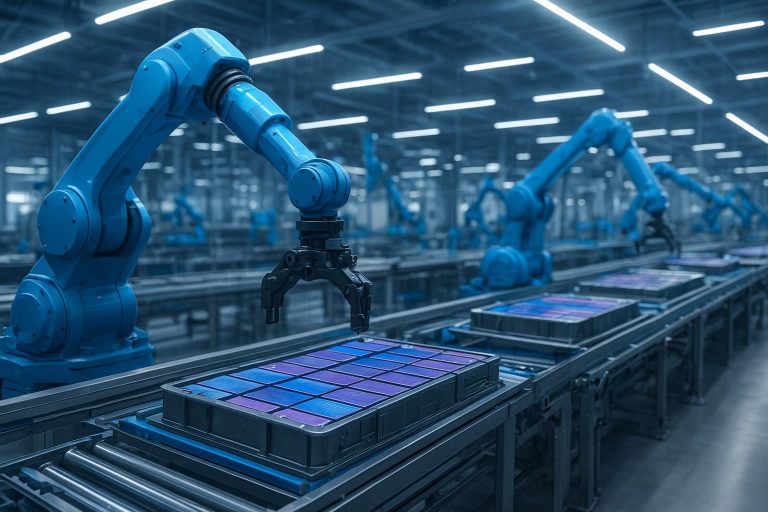
A tn machine vision system stands at the center of modern automation. Recent studies show that these systems deliver a detection accuracy of over 98% in critical manufacturing tasks, such as ultrasound probe production. By using high-resolution imaging, a tn machine vision system quickly finds small defects and speeds up quality control. With machine vision, companies in Tennessee see fewer defects, less downtime, and lower maintenance costs. Industry leaders report up to a 50% drop in downtime and a 25% boost in operational efficiency, making machine vision a key driver for cost savings and reliable performance.
Key Takeaways
- TN machine vision systems use cameras and computers to quickly and accurately spot defects, helping factories improve product quality and reduce errors.
- These systems boost efficiency by speeding up inspections, sorting, and assembly checks, leading to higher production rates and less downtime.
- Machine vision helps companies save money by cutting labor costs, reducing waste, and preventing costly mistakes early in the process.
- Tennessee offers strong local support and expert services that help businesses install, maintain, and optimize machine vision systems smoothly.
- Ongoing innovation and research in Tennessee drive new machine vision technologies, making automation smarter, more flexible, and energy-efficient.
TN Machine Vision System Overview
Definition
A tn machine vision system uses cameras and computers to help machines see and understand objects. This technology helps factories check products for quality and sort items quickly. In Tennessee, many companies use these systems to improve their work. The tn machine vision system can spot tiny defects that people might miss. It works much faster than a person and does not get tired. Many factories trust this system to keep their products safe and reliable.
How It Works
A tn machine vision system uses several important parts to do its job.
- Cognex Vision Camera with built-in I/O, lighting, and Ethernet communication
- High-resolution image capture, such as 800 x 600 pixels and 256 gray levels
- Auto-focus and flexible mounting for different setups
- Communication interfaces like discrete I/O and PROFINET for talking to PLCs
The machine vision system watches parts as they move through machines. The camera takes pictures of each part. The computer checks these images to see if the parts meet quality standards. If a part looks good, the system tells the Siemens S7-1500 PLC to accept it. If not, the system signals to reject the part. The process uses camera setup, lighting, and pixel pattern detection to make sure every part gets checked. This setup helps factories in Tennessee keep their products high-quality and their lines running smoothly.
Machine Vision Benefits

Accuracy
Machine vision systems in Tennessee help factories reach high levels of accuracy. These systems use cameras and computers to check every product for mistakes. They find small problems that people might miss, such as cracks or scratches. Companies like ISG Automation and Senswork use machine vision for defect detection in automotive manufacturing. This technology checks if each part is in the right place, which is called part positioning. It also helps with quality control by making sure every product meets the right standards.
Note: Machine vision systems can scan barcodes and QR codes to track products. This helps factories know where each item goes and if it passes inspection.
Efficiency
Factories in Tennessee use machine vision to work faster and smarter. The Kellogg’s plant in Memphis improved its robot cell by adding machine vision and robotic automation. This change led to a 43% increase in production volume. The plant processed more pallets each day without building new lines. Cycle time dropped by 67%. These results show how machine vision boosts efficiency in real-world settings.
Many companies use machine vision for tasks like assembly verification and part positioning. The system checks if all parts are present and in the right spot. It sorts products by size, color, or shape. It also reads codes for tracking and guides robots to the correct locations. These steps help factories avoid mistakes and keep lines moving.
- Common applications in Tennessee manufacturing:
- Quality control: Finds and removes faulty products.
- Assembly verification: Checks if all parts are present and attached.
- Sorting and grading: Groups products by size or color.
- Code reading: Scans barcodes and serial numbers.
- Presence/absence checking: Makes sure nothing is missing.
Cost Savings
Machine vision systems help companies save money in many ways. They reduce the need for manual checks, which lowers labor costs. Factories can spot problems early and fix them before they become bigger issues. This means less waste and fewer returns. A low cost machine vision system can help small and large factories alike.
Automotive manufacturing in Tennessee uses machine vision to cut costs by reducing errors and speeding up production. Part positioning and quality control help avoid costly mistakes. The University of Tennessee works with local companies to improve these systems and make them more affordable. Over time, these savings add up and help businesses stay competitive.
Key Metrics
True Negatives
True negatives play a key role in machine vision systems. They show how well the system can spot items that do not have defects. In quality control, a true negative means the system correctly identifies a part as good when it really is good. The true negative rate, also called Recall_BAD, measures this ability. To find the true negative rate, divide the number of true negatives by the sum of true negatives and false positives. For example, if a system finds 8 true negatives and 2 false positives, the true negative rate is 8 divided by 10, or 0.8. This means the system correctly identifies 80% of the parts that do not have defects. A high true negative rate helps factories avoid wasting time and money on parts that do not need fixing.
Tip: A strong true negative rate means fewer good parts get rejected by mistake. This keeps production lines running smoothly and reduces waste.
Precision and Recall
Precision and recall are two important metrics for TN machine vision systems. Precision shows how many of the items marked as defective are actually defective. Recall shows how many of the real defects the system finds. Both metrics help factories judge how well their machine vision systems work.
- Key performance metrics for TN machine vision systems:
- Intersection over Union (IoU): Checks how well the system finds the exact spot of a defect.
- Precision: Measures the accuracy of positive detections, balancing false positives.
- Recall: Measures the coverage of object detection, balancing false negatives.
- F1 Score: Combines precision and recall for a balanced view.
- Average Precision (AP): Looks at precision and recall at different confidence levels.
- Mean Average Precision (mAP): Averages AP across many types of defects.
- Frames Per Second (FPS): Shows how fast the system works in real time.
These metrics give factories a full picture of how well their machine vision systems perform. High precision and recall mean the system finds most defects and makes few mistakes. This leads to better quality control and more reliable automation.
Overcoming Challenges
Common Issues
Many Tennessee manufacturers face several challenges when they use machine vision systems. These issues can slow down progress and make it hard to get the best results:
- High-quality sensors and hardware cost a lot and need experts to install them.
- Shiny or reflective products make it hard for cameras to capture clear images.
- Setting up cameras, lighting, and robotic arms requires very precise work.
- Some companies worry about data privacy and do not want to connect systems to the cloud.
- Black box AI models can be accurate, but people do not always trust them because they cannot see how decisions are made.
- Complex setup and the need for special training make it hard for workers to use new systems.
- Custom sensor solutions help, but they add to the cost and need skilled workers, which can be tough for small businesses.
- New machine vision products often need a lot of training, which slows down adoption.
- Many companies fear that new systems might disrupt their current operations.
- Factories need rugged hardware that can handle tough environments, like those found in automotive manufacturing.
- Making sure new systems work with old networks and keeping costs low is a big challenge.
Note: Easy-to-use software platforms, such as Zebra Aurora, can help reduce training time and make integration smoother.
Solutions
Tennessee offers many resources to help companies solve these problems and get the most from their machine vision systems. Local service providers in LaVergne offer preventive maintenance, performance optimization, and remote support using tools like Vuforia Chalk. This remote support helps companies fix problems quickly and saves money by reducing travel.
A recent case in automotive manufacturing showed how expert help can boost results. After slowing the line speed, rewriting the tracking program, and installing an RFID system, one plant increased its line capacity by 45%. This success came from careful planning and expert integration.
| Category | Details |
|---|---|
| Location | Memphis and Jackson, Tennessee |
| Services Offered | Troubleshooting, process optimization, modernization, electrical and mechanical design |
| Process Applications | Part tracking, defect detection (2D/3D), alignment, color verification, manual inspection enhancement |
| Platforms Supported | Cognex, Keyence, Sick, Teledyne DALSA, Datalogic, Zebra, Eigen Innovations |
| Approach | Custom solutions based on client needs and manufacturing process integration |
| Contact | 901-377-5574, Toll Free: 877-735-6905 |
These services help companies keep their machine vision systems running smoothly. They also support upgrades and new installations, making it easier for factories to stay competitive.
Future Trends
Innovation in Tennessee
Tennessee has become a center for new ideas in machine vision. Several companies and research groups drive this progress.
- senswork GmbH, a German engineering firm, opened a U.S. branch called senswork Inc. at the East Tennessee State University Innovation Lab. This partnership brings advanced machine vision technology for manufacturing and quality control to the region. The Innovation Lab supports senswork Inc. with grants and local partnerships, helping them grow in the U.S. market.
- The University of Memphis Division of Research & Innovation works on a ‘Generalized Image Processor.’ This technology supports machine vision in imaging and surveillance, showing that Tennessee research institutions continue to push the field forward.
Tennessee’s focus on research and partnerships helps local companies access the latest machine vision tools and expertise.
Industry Growth
The machine vision industry in Tennessee grows quickly as new technologies appear. Companies now use AI and deep learning to solve tough automation problems. For example, Cognex uses these tools for smart label placement and vision-guided robots. These advances make inspection more accurate and flexible.
Invent Automation shows how 3D vision systems, like structured light and advanced calibration, help factories reach higher precision. Their custom solutions handle large amounts of data and fit each business’s needs.
Many trends shape the future of machine vision in Tennessee:
- More cyber-physical systems and edge computing for faster decisions.
- Hyper-automation with AI and robotic process automation.
- Human-robot collaboration (cobots) for flexible production.
- Sustainable automation that saves energy and reduces waste.
- Cloud-based and hybrid systems for better data access.
- Customization and mass personalization in manufacturing.
- Use of digital twins, advanced analytics, and 5G for real-time optimization.
Automated inspection with machine vision not only improves product quality but also supports energy efficiency and a smaller carbon footprint.
Tennessee machine vision systems play a vital role in automation. These solutions help factories reduce defects, improve yield, and lower costs. Companies see fewer recalls, faster inspections, and better tracking.
- Real-time systems reach over 87% accuracy and 94% specificity.
- Clients praise local integrators for reliability and expertise.
- Experts recommend turnkey systems and AI for best results.
- Future growth includes Industry 4.0 and deep learning.
Tennessee leads in machine vision innovation. Companies that invest in these systems gain higher quality, efficiency, and long-term savings.
FAQ
What industries in Tennessee use machine vision systems?
Manufacturing, automotive, food processing, and logistics companies in Tennessee use machine vision systems. These industries rely on fast, accurate inspection and sorting to improve product quality and reduce errors.
How do machine vision systems improve quality control?
Machine vision systems check every product for defects. They find small flaws that people might miss. This helps factories keep only good products and remove faulty ones.
Are TN machine vision systems hard to install?
Most modern systems come with user-friendly software. Local experts in Tennessee help with setup and training. Many companies offer support to make installation easier.
Can small businesses afford machine vision technology?
Many providers offer scalable solutions. Small businesses can start with basic systems and upgrade as they grow. Grants and local partnerships in Tennessee also help lower costs.
What support is available for troubleshooting?
| Support Type | Details |
|---|---|
| Remote Assistance | Phone, video, or chat help |
| On-Site Service | Local technicians visit |
| Training | Classes for staff |
Tennessee companies provide fast support to keep systems running.
See Also
Key Reasons Machine Vision Systems Are Vital For Bin Picking
Why Proper Lighting Equipment Is Critical For Vision Systems
How Machine Vision Ensures Accurate Part Identification In Manufacturing
Comparing Firmware-Based Vision Systems With Traditional Alternatives
An In-Depth Look At Electronics-Based Machine Vision Systems








